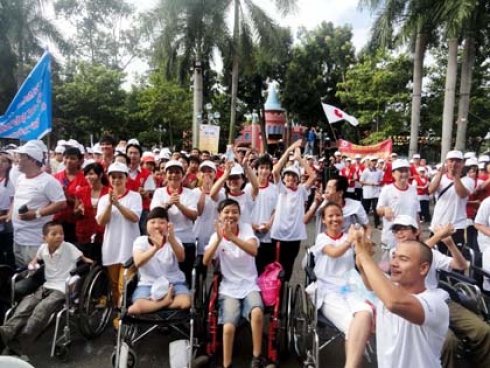US institutions mull wider aid to Vietnam dioxin victims
The United States Agency for International Development (USAID) has been collecting ideas, recommendations and comments from interested individuals and organizations to help develop a comprehensive, multiyear plan for Agent Orange-related activities in Vietnam.
The work is meant to resolve difficult and painful issues
related to the legacy of Agent Orange in Vietnam as the result of the 80
million liters of Agent Orange / Dioxin chemicals the US Army sprayed in
Vietnam from 1961 – 1973. 
A walk to raise funds to support Agent Orange / Dioxin victims in Ho Chi Minh City
The Veterans For Peace (VFP) -- an educational and humanitarian organization dedicated to the abolishment of war – has called on USAID to provide stronger support to the Community Based Rehabilitation (CBR) system, which was begun in Vietnam in the mid-1980s and engages in frequent and active dialogues with the Vietnam Association of Agent Orange Victims (VAVA) for delivery of services and assistance to Agent Orange victims nationwide.
The VFP has also asked USAID to promote greater collaboration between American institutions and Vietnamese partners to increase the capacity of Vietnamese institutions to provide needed services at all levels for people with disabilities.
These may include speech and language therapy, occupational therapy, early detection and intervention, and community based nursing and rehabilitation. At the same time, USAID should facilitate collaboration between US and Vietnamese training agencies to strengthen capacity and diversify training curriculums to bring about greater positive impacts and results from USAID funding and other support.
It has also been suggested that USAID expand its geographic reach in Vietnam.
Specifically, besides its focus primarily on the Da Nang area up to now, the organization should ensure that future funding and program efforts do not neglect communities throughout Vietnam that are not hotspots, and which today show little or no evidence of dioxin contamination.
Tuoi Tre

